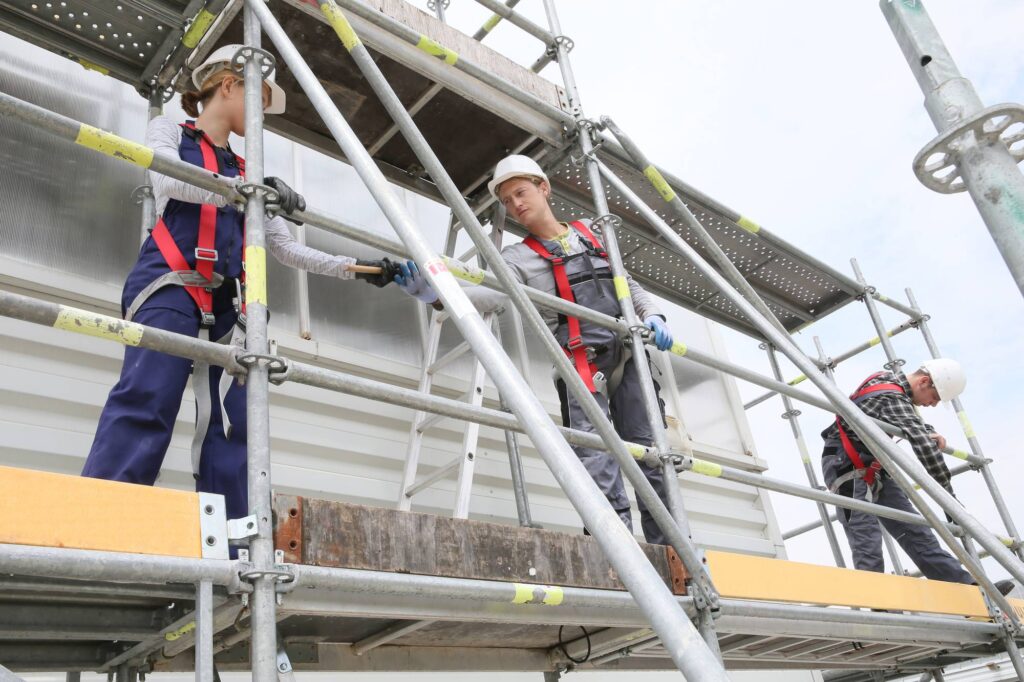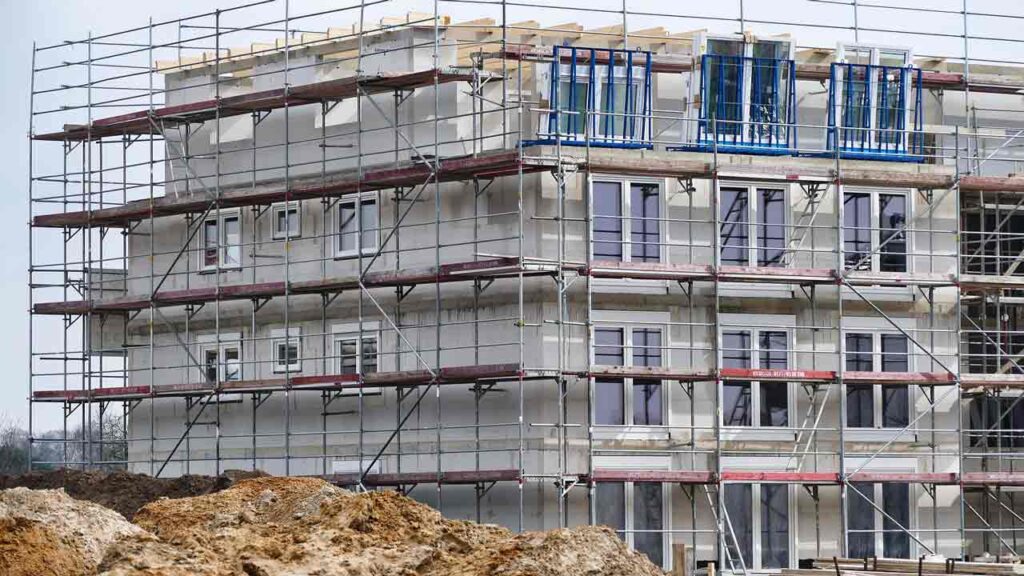Hiring a scaffold for your next home build is easy and critical. You need to know when to bring in a scaffolding hire expert, how to get an estimate, and what the scaffolding expert will do once they arrive. You should also look at things like safety precautions and when you should say goodbye.
If you’re building a new home or remodeling your existing one, you’ll need some scaffolding equipment at some point. For example, if you’re doing work on your roof or repainting the exterior of your house, it’s not uncommon to need scaffolding.
If you’ve never needed this equipment before, don’t worry. This guide will explain everything.
When Will You Need Scaffolding?
You’re building an addition

source: avontus.com
If you’re getting the addition, you’ve always wanted. You have a ton of extra space and can’t wait to start planning out all the stuff you’re going to do with it. Sure, adding an extra room means more work, but it also means more fun.
However, before you get too carried away with your plans, consider whether your new addition will be taller than the existing building. If so, then scaffolding might be necessary for that project as well. Even if your new addition is smaller than the original structure or taller than the existing building, scaffolding needs to be used.
You’re working on an extremely tall structure
When working on a high building, scaffolding is a must-have. Scaffolding provides you with a safe platform to work from that’s stable and secure. It can be tailored to suit your specific needs and requirements by its user, offering maximum flexibility. It’s the safest way to work at height, and a new home build will likely require scaffolding for some renovation or construction element.
Your building requires that your workers use special equipment

source: designingbuildings.co.uk
It’s also worth remembering that scaffolding can be used to support heavy equipment and tools, reducing the need for ladders or other precarious methods of getting material from place to place. Given that scaffold units are designed to be safe and sturdy, it will probably be easier for your construction workers if they can bring along all the materials they need when they climb up on a scaffold. That way, there will be less back and forth climbing down ladders or moving things around by hand.
A lot goes into ensuring that everything is done safely so that nobody gets hurt while working up high off ground level above people below them when knocked over could cause serious injury.
How Does Scaffolding Benefit New Buildings
Scaffolding keeps workers safe
Workers on scaffolding must have a stable platform to work from, especially when working at heights. Scaffolding can be adjusted as needed to provide the best working environment. It helps ensure that the public can safely pass by without fear of falling debris or slipping over any obstacles.
Scaffolding provides stability for new buildings

source: constructconnect.com
If scaffolding isn’t used properly, it can create instability for a building in progress and cause a collapse of the structure. One common problem is not using enough scaffolding for the job. Contractors often go with cheap materials to save money, but this creates more issues down the road when you need to make repairs or rebuild part of your house due to a lack of support from your foundation.
Scaffolding allows builders to complete projects more quickly.
Scaffolding benefits new buildings because it allows builders to complete projects more quickly. If a builder is working on the roof of a building and needs to install large pieces of equipment, for example, using scaffolding would be much easier than climbing down a ladder, walking around to the front of the building, and then climbing up again. Scaffolding also allows builders to move up and down quickly instead of climbing down and up ladders. With scaffolding, workers can install or repair several stories at once without walking up and down multiple flights of stairs.
It enables builders to work on projects that would otherwise be impossible

source: primeins.com
The type of scaffolding you choose helps determine the kind of project you can take on. That’s because each type of scaffolding has advantages and disadvantages depending on your needs. Here’s a quick guide:
- Tube and clamp – Customizable but best suited for projects that are not too tall or wide
- System/modular – Customizable but requires workers to assemble it themselves. Easily adjustable
- Shoring – Capable of holding heavy loads but may need to be reinforced if it is in place for long periods. Not too difficult to assemble
Scaffolding allows builders to work on parts of buildings that require high levels of precision.
While this might not seem like a big deal, it actually allows builders to work with a better level of precision and finish the job to a higher standard. This is because scaffolding can be set up at exactly the right height for the builder, whether 2 inches off the ground or 200 feet in the air, making it much easier and more comfortable to work on.
Along with working at exactly the right height, scaffolding also saves builders time when working on larger buildings because they don’t have to move ladders around every two minutes. And if ladders are used, flat-pack scaffold towers can be built on top of them to provide more stability and carry more tools, making construction even safer than it would otherwise be.
Scaffolding increases the speed and safety of a building project

source: civilseek.com
Working without scaffolding is a lot harder than it needs to be. It allows for easy access to anyone doing construction on a building, making the project move faster at a reduced cost. It also allows for safer working conditions, as workers can easily access the areas they need to work on and have less of a chance of falling or being injured due to their work.
Control risk
Additionally, scaffolding reduces the risk of damage to the building itself by allowing construction workers an easy way up and down while working on high parts of the building. No more leaning out over the edge or trying to use small ladders that could slip out from beneath them. Scaffolding gives workers easy and safe access at all levels.
Finally, there are many ways that proper scaffolding use will benefit both yourself and new buildings. Use these guidelines when choosing how much should be used on each project so you’ll never again have an issue with stability, security, etc.



